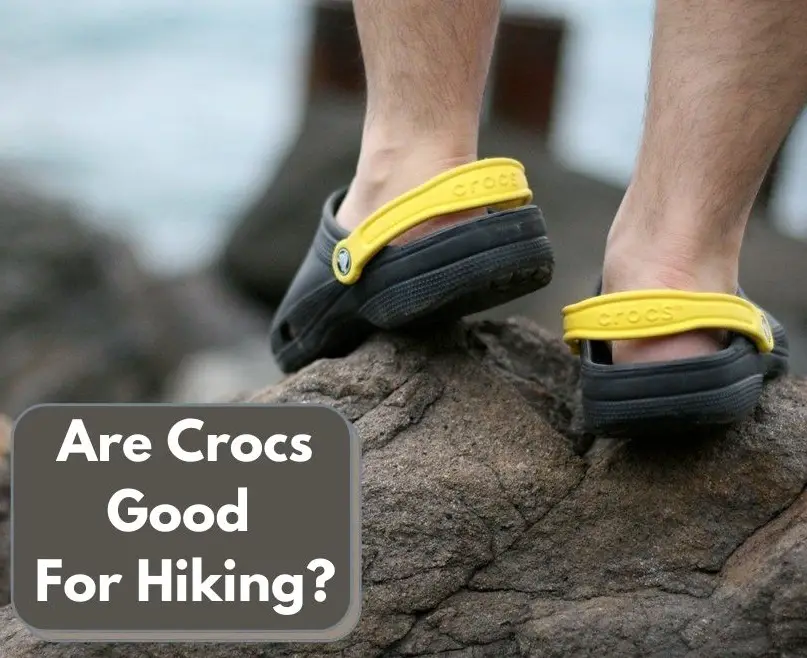Crocs are used for many activities and by a wide range of age groups due to their versatility, and have maintained popularity thanks to their unique style. But is hiking in crocs a good idea?
While Crocs may be comfortable and breathable, hiking in crocs is not recommended due to their lack of ankle support, less weather protection, and having thinner soles than traditional hiking boots or hiking shoes.
Now while hiking crocs aren’t really a thing, there are some models and certain situations where you can go hiking in Crocs.
Are Crocs Good For Hiking?
Crocs lack many of the key safety features that traditional hiking boots and hiking shoes have to offer, which is why they are not good for hiking.
That’s also why you are very unlikely to see anyone else sporting Crocs on the trail.
Having said that, you can go hiking with Crocs on short trips, or on nature walks on trails that are very flat and well-packed.
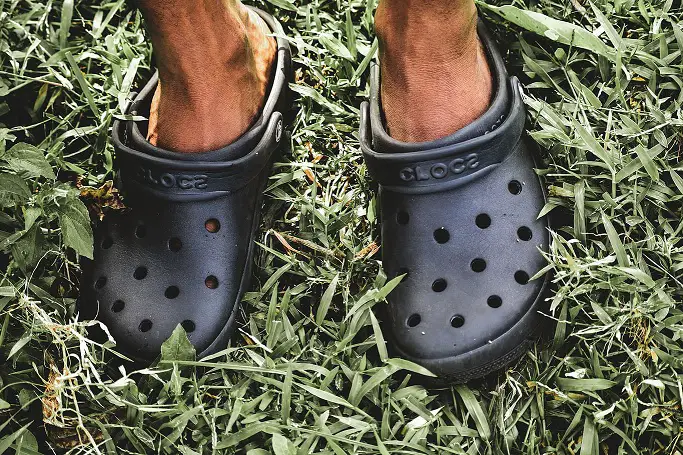
Reasons Why Hiking In Crocs Is A Bad Idea
Crocs Offer Less Traction
Although Crocs do offer a decent amount of grip for everyday use, they simply don’t offer the same amount of traction that hiking boots do.
Having proper grip ensures sure footing when hiking up and down hills, or in muddy and wet conditions.
Lack of traction can lead to falls or injury, so this is one area that we can’t ignore.
Lack Of Underfoot Support
Crocs are made of foam, which makes them super comfortable – but that comes at a cost.
The soles of Crocs are pliable, so you’re going to feel every rock, root, and other object that you step on while you’re hiking.
Many hiking boots and hiking shoes have reinforced midsoles and shanks embedded in the soles to provide extra protection for the bottom of your feet.
Minimal Toe Protection
Although most Crocs cover the majority of your toes, there isn’t much in the way of protecting them against bumps or trips over roots or other objects.
If you bust your toe on something, you risk breaking your toe or potentially getting black toenail, both of which are no fun to deal with and will keep you off the trail for a while.
No Heel Protection
Your heels are completely exposed in Crocs, leaving them vulnerable against brush, jagged rocks, and other hazards.
Crocs Can Come Off Easily
Although this can be viewed partially as a benefit, it’s mainly a drawback in relation to hiking.
Your footwear needs to be secured and snug on your feet to offer the best performance, and Crocs simply don’t fit closely enough for your feet for us to recommend them in this area.
They Let Rocks And Debris In
The holes in your Crocs and the open heel design may be comfortable, but they can let in small rocks, sticks, and dirt as you hike, leading to blisters or irritated feet.
This can be a nuisance at best when you have to keep stopping to shake out your Crocs when hiking.
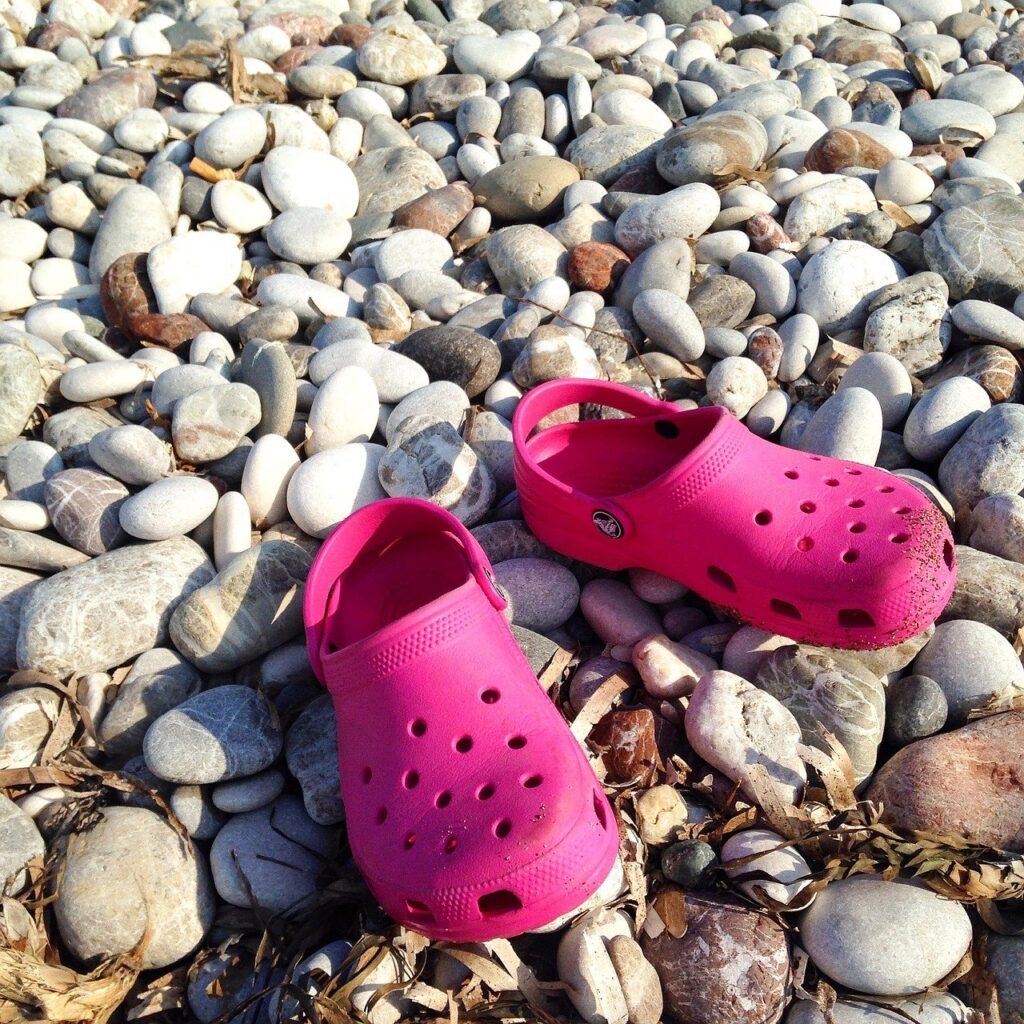
Whys Crocs Are Good For Hiking
They’re Lightweight
Crocs are much lighter than regular hiking boots, and considering that your feet are 5 times more sensitive to carrying weight compared to your back, you’ll feel the benefits of light footwear on longer treks.
Crocs Are Breathable And Dry Quickly
The holes in Crocs allow air to get in easily, helping to dry sweat and keep your feet moisture-free.
The foam they’re made with also repels water and dries quickly, which is a big bonus.
Taking Them On And Off Quickly Is A Breeze
Although Crocs let objects in easily, they also come off and on in a flash, making it much quicker to get stuff out of them compared to hiking shoes or boots.
Crocs Are Multipurpose And Versatile
After your hike in Crocs, there’s no need to change into different footwear.
You can easily transition from outdoor activities to running errands or doing whatever else is on your schedule.
The Best Hiking Crocs
Crocs Classic All-Terrain Clog

The Crocs Classic All-Terrain Clogs were designed with travel and adventure in mind, featuring an adjustable strap for better fit and a more rugged outsole than traditional Crocs.
Crocs Bogota Clog

The Crocs Bogota Clogs take the comfort and versatility of classic Crocs, but add a ventilated leather upper for extra ruggedness and a pivoting heel strap to provide a snugger fit.
Crocs Swiftwater Expedition Sandal

The Crocs Swiftwater Expedition sandals are great Crocs for wet conditions and feature adjustable velcro straps on the forefoot and ankle, along with a molded Matlite heel strap and footbed to provide the comfort you expect from Crocs.
Alternatives To Crocs For Hiking Boots
Hiking Boots

Not to state the obvious, but hiking boots and hiking shoes are going to be the recommended option for hiking footwear.
If you’re looking into these traditional options, check out our recommendations for the best men’s hiking boots under $100 and the best women’s hiking boots under $100.
Hiking Sandals
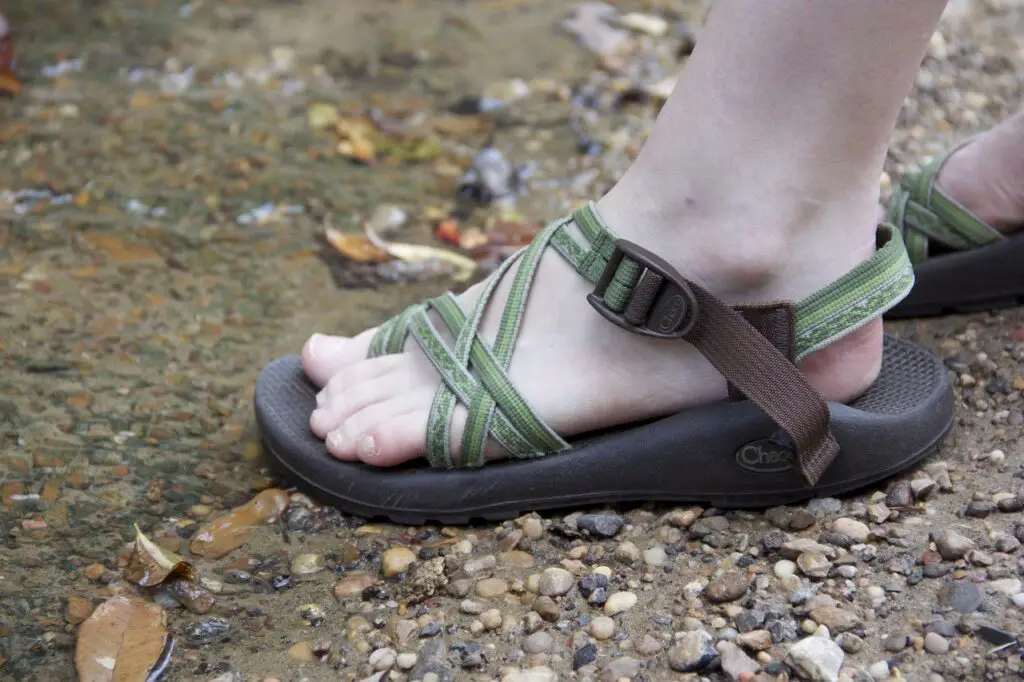
If you’re craving the freedom that comes with wearing Crocs but would like a more secure fit, hiking sandals are the way to go. They feature straps that secure tightly around several areas of your feet, support your arches, and provide more durable soles that are better than Crocs for hiking.
Check out our guides about are hiking sandals worth it and are Chacos good for hiking for some good places to start.
Minimalist And Barefoot Hiking Shoes
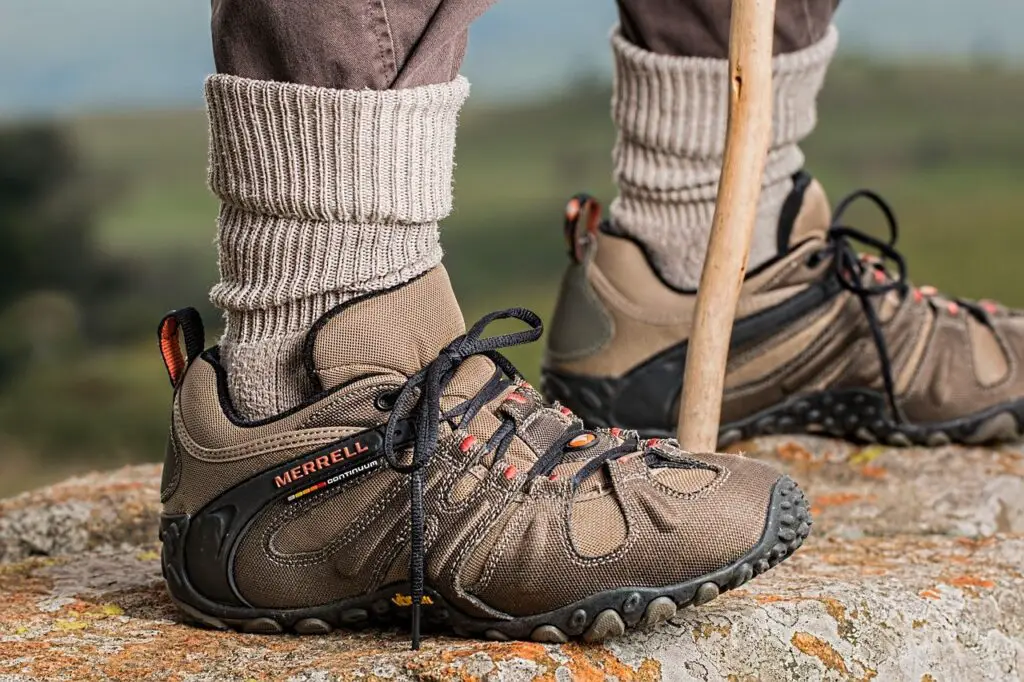
There are some unique benefits to hiking in minimalist footwear, and those who do swear by it.
Take a look at our guides to the best minimalist hiking shoes and our reviews of the best toe shoes for hiking for more info.
Tips For Hiking In Crocs
Break Them In
Just like breaking hiking boots in, you also need to break in Crocs before hitting the trail.
Wear them around the house and while doing errands to get everything properly broken in while being sure to pay attention to any hot spots during the process.
Crocs are pretty flexible so this should be a very short process.
Start Out Small Wearing Crocs For Hiking
After breaking in your hiking sandals, don’t go for a 10-hour hike! Start small, taking shorter hiking trips and building up the length gradually so you don’t accidentally overdo it.
Prep Your Feet For Hiking With Crocs
Building up calluses is going to help with any discomfort from getting stuff in between your sandals and your feet on the trail and also cut down on blisters.
Check out our guide on how to prepare your feet for hiking for some great tips here.
Additionally, you can pre-tape the hot spots on your feet using Moleskin, Leukotape, or Rock Tape to prevent blisters from forming while hiking.
Don’t Forget Sunscreen
Always apply sunscreen to your feet and toes (unless you are going for that Croc tan look).
Your toes and feet generally get less sun exposure than the rest of your skin, leaving them more prone to sunburn.
Rock Some Socks With Your Crocs
While we could debate the fashion merits of socks and Crocs all day, using a pair of lightweight hiking socks with sandals gives your feet sun protection, some small extra layer of protection against insects and (maybe) snakes, and most importantly allows for a barrier between the foam and your bare skin, cutting down on hot spots and blisters.
FAQs About Hiking In Crocs
Although Crocs offer good water resistance, can be taken off and on easily, and are lightweight, they don’t offer enough fit, foot protection, or support for the demands of hiking, so we do not suggest wearing Crocs for hiking.
If you’re going to wear Crocs while hiking, we recommend the Crocs All-Terrain Classic Clogs due to their rugged outsole and adjustable strap.

